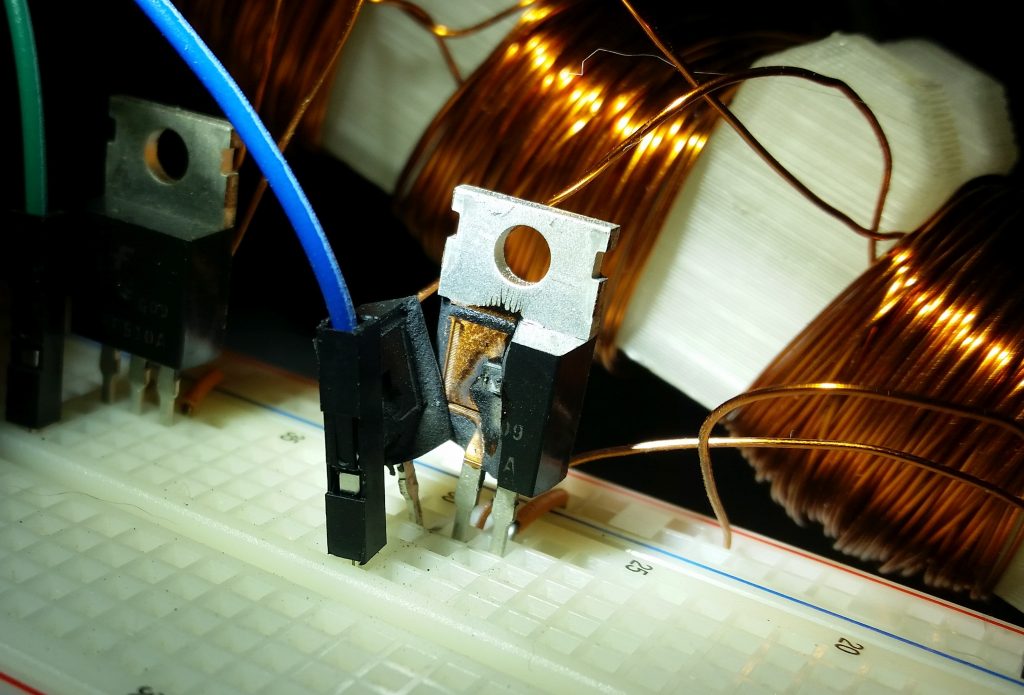V = L*di/dt. It’s what inductors do.
While working on an electromagnetic project, I needed to control a series of solenoid coils. This sort of thing is usually handled by switching the low side — connect one terminal of each coil to a power rail, and use an NFET to connect the other side to ground when you want to fire it.
It’s great in theory — but the problem with inductive loads is that they react badly to having the current cut off, generating a potentially very large voltage across their terminals as the magnetic field collapses in response to a cutoff of the current to the coil. (Inductors are sometimes thought of as “mass” when comparing electronic oscillators to mechanical mass-and-spring systems. An inductor with current flowing through it is somewhat like a moving electrical mass. All that energy has to go somewhere!)
Many MOSFETs, including the IRF510s I was using, have a built-in flyback diode to address this problem. (You can see this on the datasheet as a diode with its anode connected to the source and its cathode connected to the drain.) This diode is reverse biased against the normal voltage present across the FET when it’s off, but allows current to continue flowing when the FET cuts off. Theoretically, roughly the same current should continue flowing in the coil since the diode would continue to conduct once the voltage became over 600mV or so.

Inductors can store quite a bit of energy!
Or, rather, that’s what was supposed to happen. What actually happened was a 100ms coil firing, followed by the FET turning into a small firecracker.
It’s pretty clear what happened — when the current was interrupted, the flyback diode couldn’t handle the inrush current from the coil. The datasheet claimed a pulse current rating of 20A and each coil has a resistance of roughly 2 ohms. So at 30V (the setting which caused the explosion), it should have seen a current of about 15A, even assuming a zero-ohm on resistance.
This actually worked out fine for the pulse itself (the coil did fire), but was apparently too much for the flyback diode. The preliminary postmortem is that it seems to have been basically vaporized by the current pulse, blowing the encapsulation in half and somehow even managing to kill the controlling Arduino in the process. (I’ll reuse what I can from it — maybe I can just swap out the chip.) Note to self: FETs can send killer pulses up the gate lead when caused to explode.
Oh, well. Beefier transistors and some large Schottky diodes should hopefully fix the issue. And some protection for the Arduino. I suppose I could just lower the rail voltage — but where’s the fun in that?

